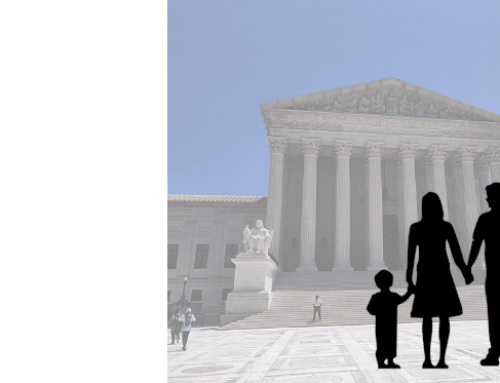Catholic League president Bill Donohue comments on an editorial in today’s New York Times:
The April 20 editorial in the New York Times on the Equal Rights Amendment (E.R.A.) is flawed in several ways. It is not the “religious right” that is responsible for the failure of this amendment, it is liberals. The editorial demonizes the “religious right” for “fearmongering,” when, in fact, it was liberal women who fought the E.R.A. for decades.
If the E.R.A. wins the support of two more states, it will have the 38 needed for ratification (the male-dominated Congress overwhelmingly passed it in 1972), though it may not survive a legal challenge: when advocates of the E.R.A. failed to muster 38 states in 1972, Congress extended the deadline for seven years, and then again for another three.
The clock has long run out, so it is debatable whether getting the needed three-fourths of the states to approve will count 36 years after the measure failed for the third time. Moreover, five of the states that voted for it later rescinded their vote, thus complicating matters even further.
Legalities aside, the Times editorial fails to tell the truth about the evolution of the E.R.A. Proof of the following account is detailed in my 1985 book, The Politics of the American Civil Liberties Union, published by Transaction Press.
The idea that women should have the identical rights afforded men was first broached in 1916, and in 1923 the E.R.A. was proposed by the National Women’s Party. Working against it were feminists who objected to identical rights, led by Eleanor Roosevelt. She said women needed special protection against hazardous and “demeaning” occupations, jobs that only men should have to do. Her opposition proved to be successful, though the measure would later resurface.
When the E.R.A. was defeated in the Senate in July 1946, the ACLU was delighted: mission accomplished. The ACLU member who worked the hardest to defeat it was Dorothy Kenyon, known as a “radical” judge; she chaired the ACLU’s Committee on Women’s Rights.
In the 1950s, the ACLU pulled out all the stops to defeat what it called the “so-called ‘equal rights amendment’ (for women).” The ACLU opposed it because of “the danger that it would destroy the power to enact differential legislation granting equality in fact (as distinguished from mathematical identity).” The amendment was opposed by most of the trade unions (both women’s and men’s) as well as the League of Women Voters. Even the American Association of University Women was opposed to the “liberating” amendment.
The ACLU acknowledged at the time that there was some residue of discrimination against women, but “only the remnants of feudalism remain,” making moot the need for an amendment. “Even the practice of unequal pay for equal work, a world-wide phenomenon extremely interesting in its psychological motivations,” the ACLU said, “is nothing but a universally bad habit.” Even Phyllis Schlafly, who fought the E.R.A. in the 1970s, never went that far.
All through the 1960s, while the ACLU was demanding equal rights for blacks, Indians, Hispanics, migrant farm workers, the poor, students, the mentally ill, draft dodgers, the Klan, Nazis, the mentally ill, and prisoners, it fought the E.R.A. In fact, Kenyon argued that the 14th Amendment was sufficient for women. Then, like a lightning bolt out of the sky, Kenyon switched positions, leading the ACLU to support the E.R.A. in September 1970.
Schlafly mobilized conservatives to oppose the E.R.A. in the 1970s, but it was not conservatives who voted against it in New York and New Jersey. When the measure was put to a vote in 1975, after the male-dominated lawmakers in the two states voted for it, the measure was soundly defeated. Linda Greenhouse of the New York Times wrote that it was women, not men, who were responsible for the outcome.
The role that feminists played in killing the E.R.A. is not something that liberals want to talk about. They would rather demonize the “religious right.”
The Times looks even more hypocritical when it says that while there are laws granting equal rights to women, “The E.R.A. would add an extra layer of legal protection for women—and men—against discrimination.” Yet when it comes to laws offering a new round of legal protection for the unborn, or for white men victimized by affirmative action, the same New York Times says we have enough laws on the books for them.
If we are to have an honest discussion on the E.R.A., we will have to turn to sources other than the New York Times and the ACLU.







